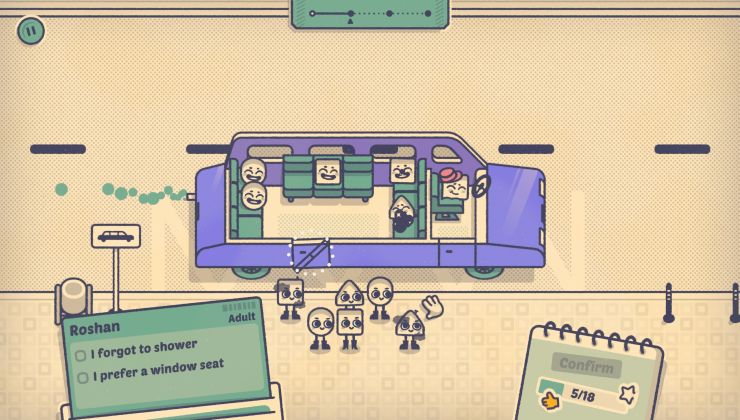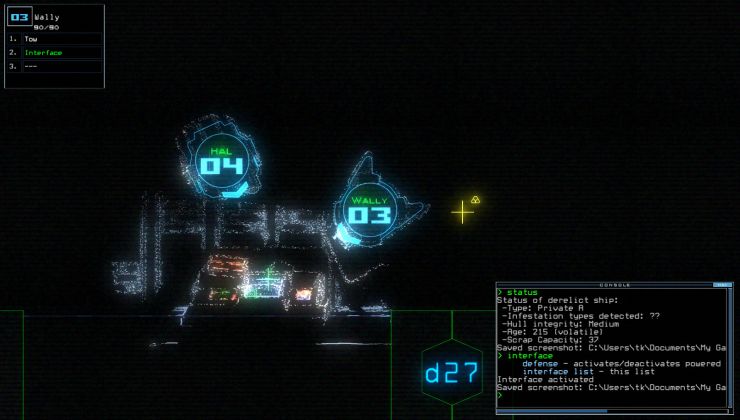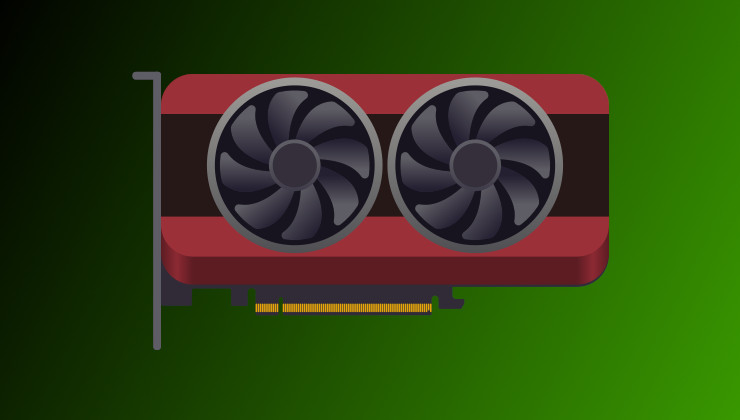One thing that is a little concerning is how much storage the bottom edition of the Valve Steam Deck will have without plugging in a microSD card, seems we now have a better idea. Thanks to a developer posting on the MetaCouncil forum, there were shots shared from behind the scenes where Valve has been posting changelogs for those with Steam Deck devkits.
Considering the low-end Steam Deck is only 64GB, it's not exactly a lot of room, although we know games will load quickly from an expansion card it's still useful to know what you've got to work with. The post shows that Valve has put SteamOS on quite the diet sitting now at 10GB.
10GB still sounds pretty big, although that does mean the low-end Steam Deck should have around 50GB. Not much of course, especially considering the colossal size of some newer games but sure is better than the original 24GB. When you think that Windows 10 needs a minimum 20GB and Windows 11 needs 64GB - it's yet another reasons for people to stick with SteamOS out of the box.
Not only that, it appears that some Steam Deck hardware has a different brand of memory between Micron and Samsung, which might just be the difference between the original devkit hardware and the newer Design Validation units.
Or they use btrfs-subvolumes and allocate storage dynamically.
Unlikely, since BTRFS does not have casefolding which Proton uses. Casefolding for now is only available with ext4.
Hmmm I actually use proton on top of btrfs, what issues will this cause ? Can I assume some of my games are broken because of that ?
Windows developers expect "load 'myfile'" to successfully load "MyFile". This can be made work with "case folding". So if some games don't find their files (which might result in many different symptoms), this might be the reason.
I think so too, they are probably using an A/B-model, which means that you have two installations of the OS at every time
[...]
Or they use btrfs-subvolumes and allocate storage dynamically.
Not exactly, they run on ostree, like Fedora Silverblue. It's a bit like a git repo, or guix/nix. It has deduplication, rollback, versioning, atomic updates. That's really promising tech, I'd have picked the same.
Let's try to come up with a basic estimate
- Base Arch Install: 100 MiB
- LLVM plus mesa: 300 MiB
- Web browser: 200 MiB
- Steam: 300 MiB
- Proton: 600 MiB
- KDE Plasma plus base KDE applications: 2 GiB
- Base Flatpak runtimes (freedesktop.org, VAAPI, mesa): 700 MiB
Total: 4.2 GiB. I'm falling short, but there could be more pre-installed software like Discord, plus probably a boot partition (might be a btrfs subvolume, not sure which FS they use), and possibly a "system restore" partition that might double the size, although I would personally make that a webinstall at about 150MiB.
Any other ideas?
I think you're forgetting locale. On my system just `/usr/share/locale` and `/usr/lib/locale` are 2GB!
So that would put as at ~6GB.
Just like Windows 10, it will eat storage for breakfast for updates, that's the realistic number given by MSFT to ensure it runs properly.Windows 11 needs 64GBIts minimal requirement, not real usage. [Clean w11 has 21.1 GB](https://www.minitool.com/data-recovery/how-much-space-does-windows-11-take.html).
But truth is, windows don't have preinstalled steam...
Still i dont think they count whole 64GB just for windows.
Over on r/SteamDeck: Wow 10gb is really small for an OS! GJ Valve!
Here: What the f did Valve do that it takes so much space?!
It's Arch, it doesn't have anything "irrelevant" preinstalled.
No, it's SteamOS and it has everything preinstalled that Steam Deck devs wanted to have. It's not unthinkable that early images could contain lots of dev tools, debuggers, compilers, debug symbols or even random cruft that won't be there in the final release.
Last edited by dos on 17 Dec 2021 at 7:23 am UTC
Let me interject for a moment, GB and GiB are different units. Gigabyte (GB) is the base10 unit, while Gibibyte (GiB) is the base2 unit. This makes a difference even at the scale of 24 GiB (= approx. 25.7698 GB). See how Valve correctly uses the expected base2 unit in their changelog?
The wonderful world of memory and storage units
Edit: Looking at Endless OS download ISOs https://endlessos.com/download/ They are between 14GB ~ 20GB, I know they are GNOME based, but still a good reference I'd say, although they seem to bundle a lot of software/tools.There is a 1.7GB ISO. The 17GB one is meant for use in education sector with limited bandwidth, so it has a lot of e-book/wikihow, a bunch of apps pre-installed, and include they coding games they're pushing.
Honestly, I think SteamOS could be more efficient, but it could possibly be some redundancy because end-user expect things to "just works."
I think so too, they are probably using an A/B-model, which means that you have two installations of the OS at every time
[...]
Or they use btrfs-subvolumes and allocate storage dynamically.
Not exactly, they run on ostree, like Fedora Silverblue. It's a bit like a git repo, or guix/nix. It has deduplication, rollback, versioning, atomic updates. That's really promising tech, I'd have picked the same.
Let's try to come up with a basic estimate
- Base Arch Install: 100 MiB
- LLVM plus mesa: 300 MiB
- Web browser: 200 MiB
- Steam: 300 MiB
- Proton: 600 MiB
- KDE Plasma plus base KDE applications: 2 GiB
- Base Flatpak runtimes (freedesktop.org, VAAPI, mesa): 700 MiB
Total: 4.2 GiB. I'm falling short, but there could be more pre-installed software like Discord, plus probably a boot partition (might be a btrfs subvolume, not sure which FS they use), and possibly a "system restore" partition that might double the size, although I would personally make that a webinstall at about 150MiB.
Any other ideas?
Where did you get a base install size of 100MiB? Granted, I am on Ubuntu but
- the minimal kernel alone (no modules) requires 110MB of disc space. Add some kernel modules, firmware, basic libraries and GNU tools...
- Browser? Which one? Firefox comes in at around 250MiB, Chromium is considerably larger.
- Steam? Runtime and libs - we are getting into GiBs without any Proton version (bin32 - 800+MiB, bin64 - 300MiB,...)
- Mesa? The 64bit libgl1-mesa-dri reports 456MB, the i386 version 439MB plus Vulkan drivers. llvm clocks in at 100MiB per architecture.
That's Ubuntu, but I seriously doubt that Arch can do with a mere fraction of these binary sizes.
They know device, so they can use more aggressive approach for steam deck images.
Can be mesa compiled only with limited GPUs support? Lot of code is common, but they know GPU which they want support, so they don't need support for older architectures then RDNA 2.
Other point is, do they need LLVM, or they just can use ACO for everything which is needed to do on device?
Does anyone know what the hell they are including to make it that big? Even with several proton-versions preinstalled it shouldn't get up to 10GB, let alone 24.
Or are they maybe going in the silverblue-direction and include a bunch of redundant libraries?
It's a regular Linux distro that can function like a regular desktop OS, so expect there to be drivers for all sorts of peripherals, entire library sets for GTK and Qt, the entire KDE desktop, as well as other OS tools like editors, store clients, media players, etc.
Windows 11 takes up 64 gb? Seriously?I have a drive with a freshly installed Windows 10, and by freshly I mean rally freshly installed with absolutely nothing added (I know this because I simply couldn't get Wifi or Ethernet to work so wasn't able to install anything, not even the drivers). It's currently sitting at 48.1 GB used! So, Windows 11 taking 64GB wouldn't be too far off from Windows 10. I'm not sure what the article means by saying Windows 10 needs a "minimum of 20GB"; maybe there are ways to minimize the installation to bring it down from ~48 to 20?
Windows 11 takes up 64 gb? Seriously?I have a drive with a freshly installed Windows 10, and by freshly I mean rally freshly installed with absolutely nothing added (I know this because I simply couldn't get Wifi or Ethernet to work so wasn't able to install anything, not even the drivers). It's currently sitting at 48.1 GB used! So, Windows 11 taking 64GB wouldn't be too far off from Windows 10. I'm not sure what the article means by saying Windows 10 needs a "minimum of 20GB"; maybe there are ways to minimize the installation to bring it down from ~48 to 20?
Or the 20GB was the initial size upon release of Win10 and it's this big because of updates?
Windows is weird in that regard.
the question is what/why was it 24GB big before and how they managed to save 14GB.
A bit late to the party, but obviously it's because they removed emacs (:
While 20G minimum for an installed Windows 10 system may be somewhat true-ish, in practical terms is complete nonsense. I had updates fail on Windows 10 because I only had 40G of free space. The thing needed at least 60G to successfully complete!Haha, I had bought some dual-boot tablet with windows and Android on it. Sure enough, you cannot update Windows without more storage.
I am sure there will be people who will figure out how to cram Windows into Steam Deck, but that's not going to be standard practice, that I am sure of.
How dare they remove emacs! How are we supposed to edit files?the question is what/why was it 24GB big before and how they managed to save 14GB.
A bit late to the party, but obviously it's because they removed emacs (:
Ha, you now that think about it.. being good at emacs vs vi.. is kind of like the equivalent of one using sorcery for magic vs divinity based magic. They can get the same results, but people will look at you like you are mad if you try to suggest the other one..












 How to set, change and reset your SteamOS / Steam Deck desktop sudo password
How to set, change and reset your SteamOS / Steam Deck desktop sudo password How to set up Decky Loader on Steam Deck / SteamOS for easy plugins
How to set up Decky Loader on Steam Deck / SteamOS for easy plugins
See more from me